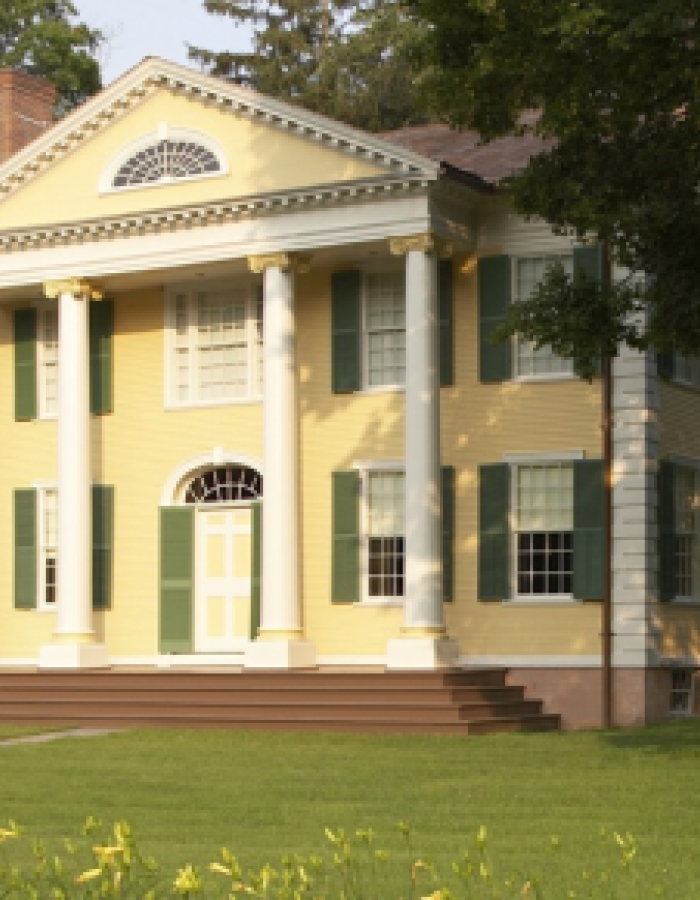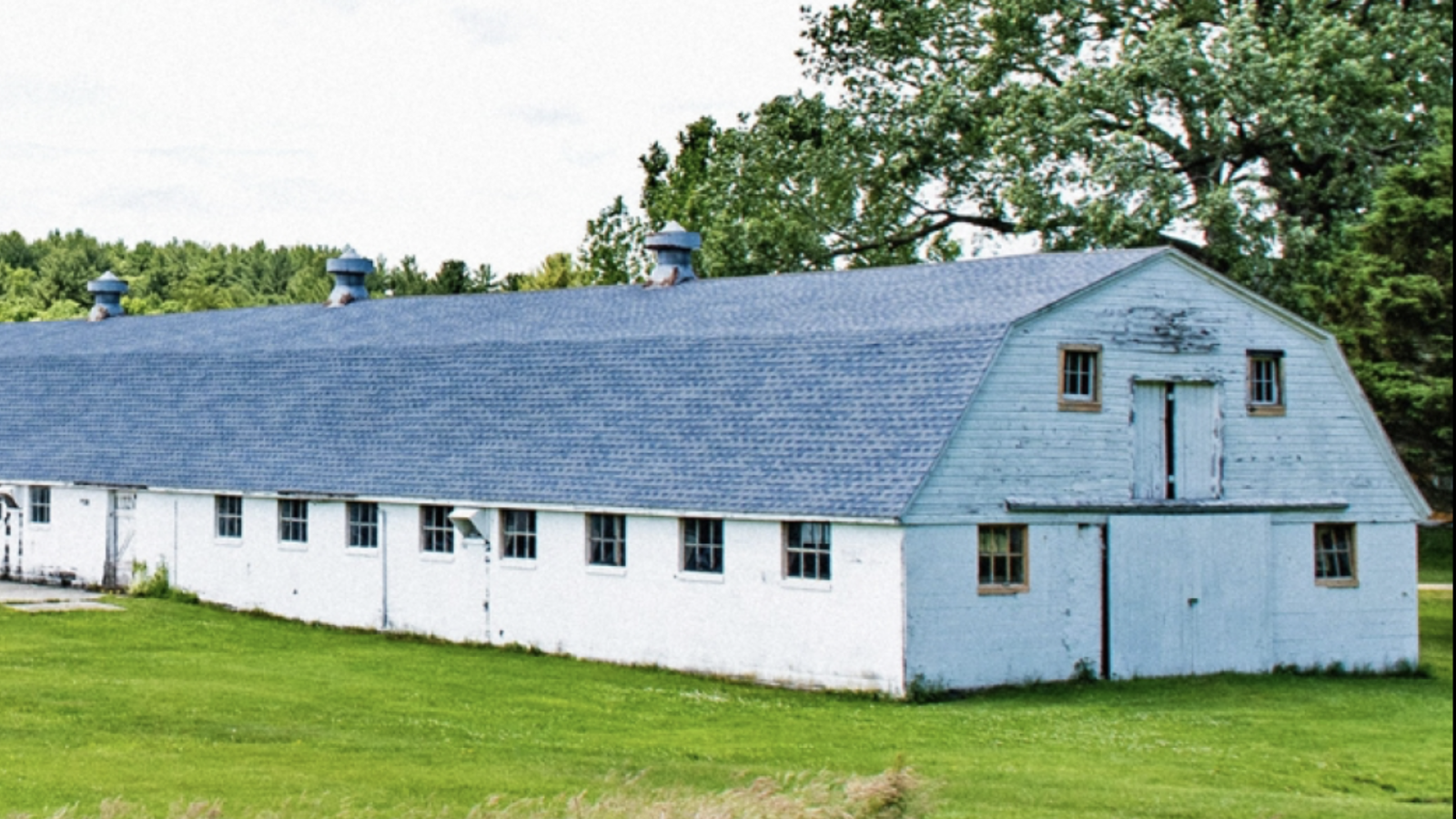



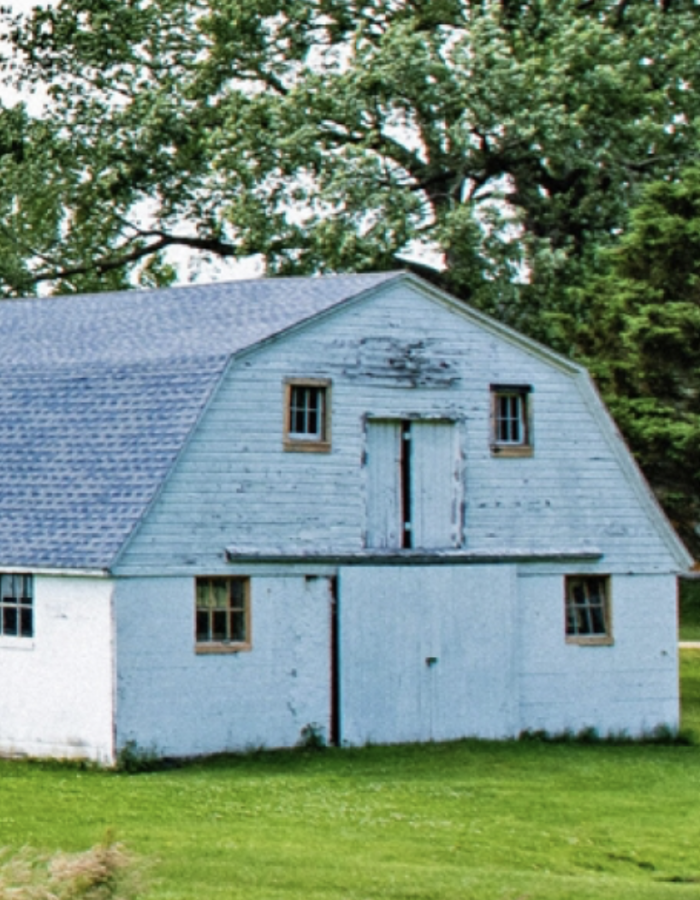



A Day Well Spent on the Connecticut Barns Trail
Our CT Ambassador, Deb Cohen of The Front Door Project took a ride on the Connecticut Barns Trail, established by Preservation Connecticut. She visited key sights around Connecticut’s northeast region on her way to check out some of the most scenic and historic barns in the state.
About the Connecticut Barns Trail
Depending on where you live or visit in our great small state of Connecticut you would never guess that our early history was heavily based on agriculture. Farms dotted the landscape all over the state and were a primary source of income for many residents until the middle of the 19th century when other forms of industry in Connecticut began to overtake agriculture resulting in the continuous decrease of the number of farms across the state.
With the decline of Connecticut farming came the decline of a New England icon, the barn. While other New England icons may seem more obvious (lighthouses, covered bridges, and lobster come to mind) it is hard to imagine a New England landscape without a barn in the scene. Many of Connecticut’s barns have already been lost, and others suffer from demolition by neglect.
Like other forms of architecture, barns like this one in Woodstock (above) are a visual representation of our history. From the most humble post and beam construction to an architect designed gentleman’s barn, and everything in between, barns help to tell our Connecticut story. With this in mind, the Preservation Connecticut set out to create an inventory of barns throughout the state.
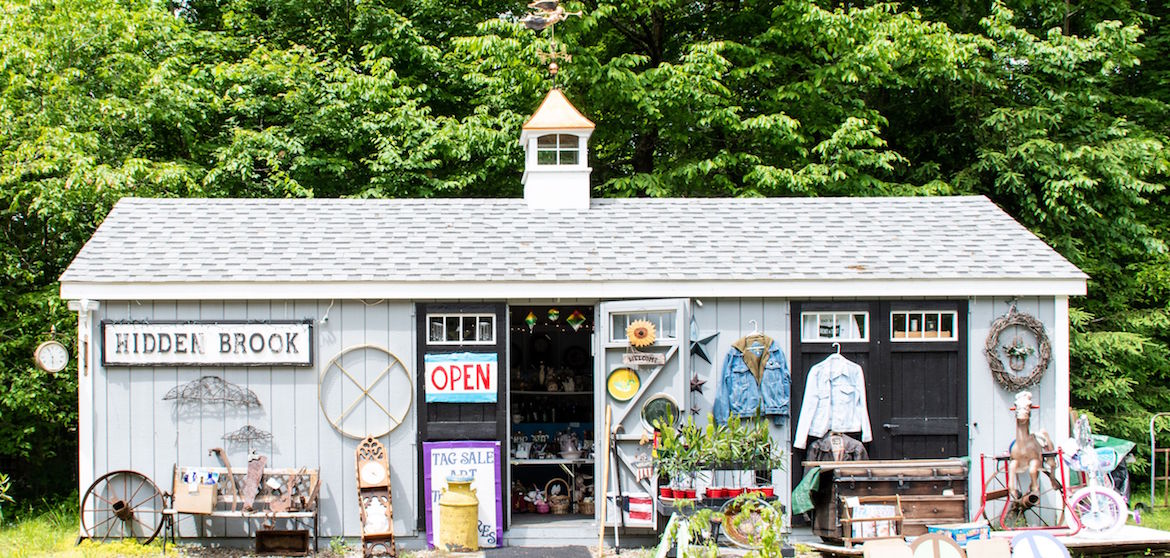
Preservation Efforts
From 2006-2010, with the help of over 400 volunteers, the bulk of the inventory was completed resulting in a list of almost 8,600 barns across the state! Key to leading the charge was Todd Levine, an architectural historian who now works for the State Historic Preservation Office. In speaking to Todd about his work on the project, the first step in preserving anything is to document what you have.
While a major goal of the project was identification of barns that might be worthy of inclusion on the State Register of Historic Places, a byproduct of the inventory was the creation of the Connecticut Barns Trail. The state was divided into seven regions with seven routes that travel some of our state’s most scenic backroads connecting a series of barns that are open to the public along the way—including the Hidden Brook shop in Eastford.
Intrigued, I set out on a recent sunny Friday with a large cup of coffee and some country tunes on the radio. My route of choice? The Quiet Corner, in the northeast part of the state. While the Barn Trails map suggested starting in Coventry, I worked the trail in reverse starting in Woodstock after looking at the hours of the various stops along the way.
If you plan to travel a similar path, just be sure to check with each stop, as hours may differ.
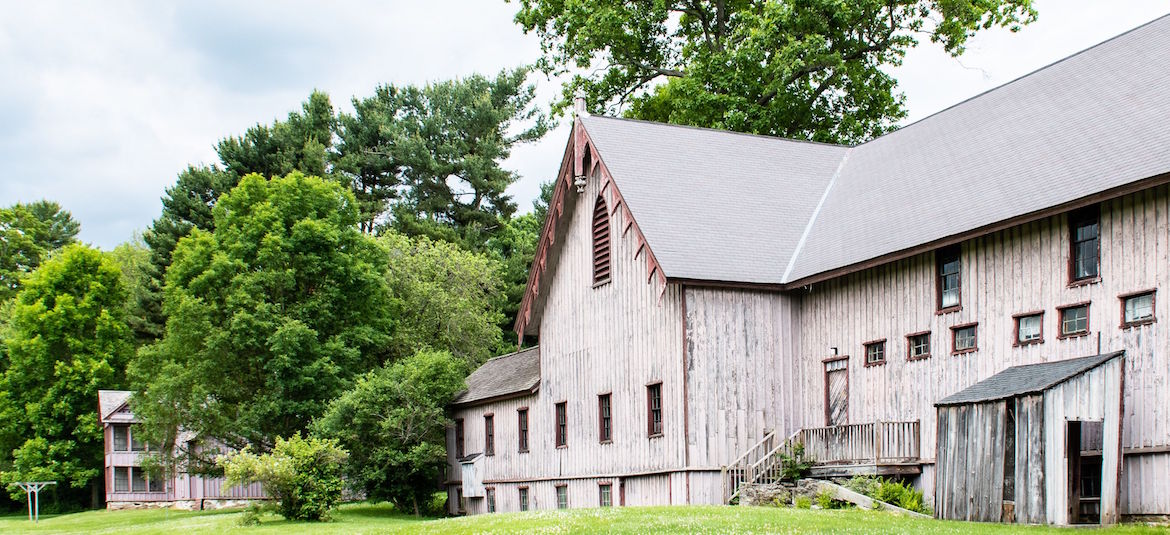
First Stop on the Trail: Roseland Cottage, Woodstock
Blue skies and cumulus clouds were the perfect backdrop to the rolling hills, open pastures, and stone walls that greeted me as I reached my first destination on the trail: Roseland Cottage. With an enviable spot on Route 169 facing the Woodstock Town Green, Roseland Cottage is a Gothic Revival pink confection constructed in 1846 and inhabited by Henry and Lucy Bowen and their young family during the summer.
I made it just in time for the next tour of the National Historic Landmark, replete with stained glass windows, intricate wall coverings, and elaborate carpets. The Bowen story is a fascinating one and gives deep insight into views popular during the Victorian era. While the main house is clearly the focal point, the tour also includes the stunning parterre gardens and outbuildings, including the architect designed carriage house (a fancy term for barn).
Also designed in the Gothic Revival style, the carriage house today includes event space, a small gift shop, and the oldest surviving indoor bowling alley in the country. A definite highlight of the tour! Another outbuilding on the property served a multitude of functions, including ice house, aviary, and storage for fireplace wood. As I made my way to my next destination on the trail, I gaped at the stunning historic architecture in Woodstock. On the Barns Trail, the journey is just as important as the destination, with historic homes, churches, antique shops, and working farms along the way. I was compelled to stop at Hidden Brook, a tiny shop with a variety of collectibles. It has no website and no social media, so visitors should just pull in the driveway and walk right in. Cash only though!
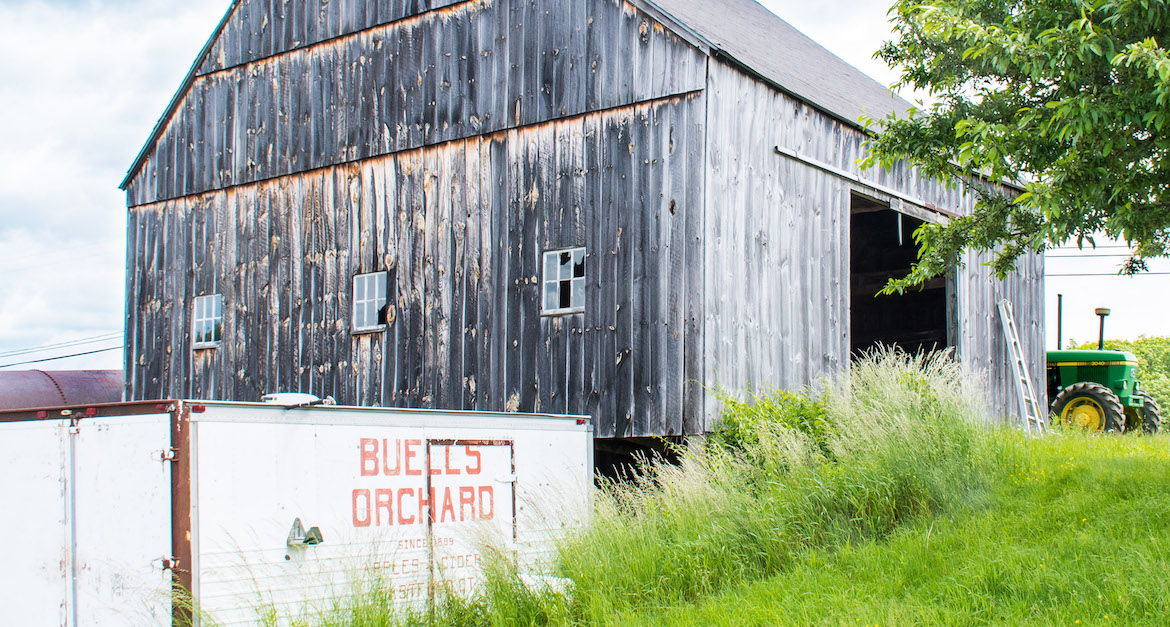
Second Stop: Buell’s Orchard, Eastford
Of course the Connecticut Barns Trail does include farms as well. Every section of the Barns Trail was thoughtfully organized to allow visitors to see a variety of barn types and uses, including historic sites, vineyards, ice cream spots, cider mills and so much more. Since 1869, Buell’s Orchard (pictured above) has been a family owned and operated farm in Eastford with pick-your-own produce throughout the spring and summer months and into the fall. Strawberries, blueberries, peaches, apples, and pumpkins are their primary offerings, along with cider and delicious doughnuts in the fall. The historic barn on site is a traditional post-and-beam construction, built in the English style. The Connecticut Barns Trail map includes descriptions of the various types of barns, and I learned that English style barns (with the doors on the side of the barn) were ubiquitous until the New England style gained popularity (doors on the gable end).
For those that prefer to purchase versus pick-your-own, Buell’s has a charming store that includes other items for sale like preserves, honey, and additional locally produced products. They also host a Harvest Festival over Columbus Day weekend every year with live music, hayrides, and more.
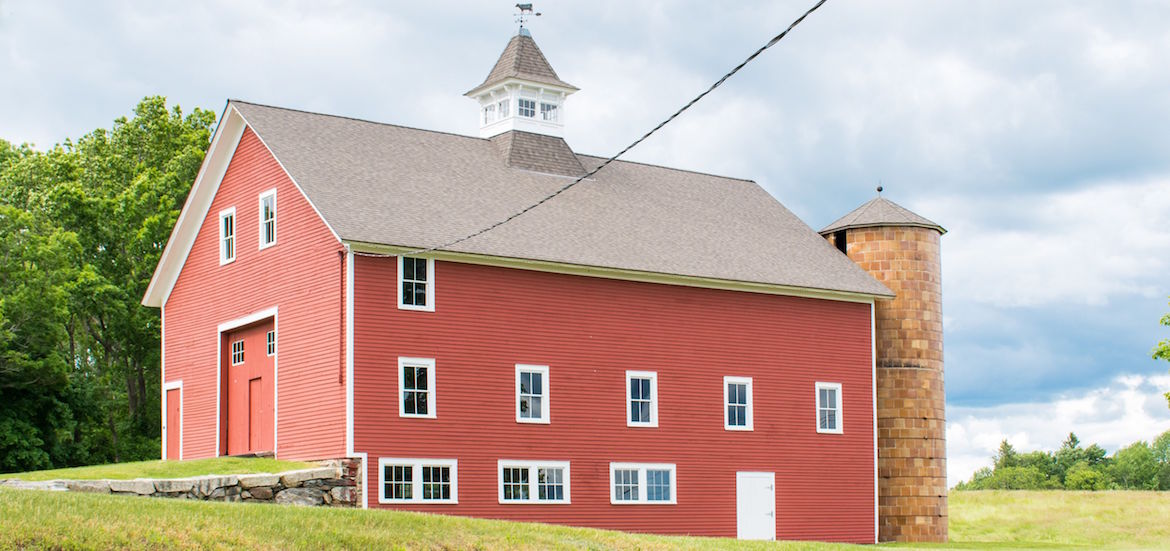
Third Stop: University of Connecticut, Storrs
One of the main reasons I selected The Quiet Corner section of the Connecticut Barns Trail was because University of Connecticut was on the list. Other than visiting a student or attending a basketball game, many might wonder why you would want to visit UConn’s campus in Storrs.
UConn’s history is rooted in agriculture, and one is immediately reminded of this as you reach campus. Horsebarn Hill (pictured above) with its pastures dotted with horses and cows, white fences that seemingly go on for miles, and dozens of barns let you know that the agricultural program is thriving at UConn today. A land-grant university, UConn’s agricultural program was established in 1881. Its goals are teaching, research, and outreach. Its students represent the wave of the future in farming, with key goals including sustainability, scientific discovery, and innovation.
A hallmark of the agricultural program is the UConn Dairy Bar, an award-winning creamery operating since 1953 that serves over 200,000 customers annually. The ice cream is made onsite, manufactured with milk from the program’s own cows. Since I was alone on my explorations, I decided early on to have ice cream for lunch. I’ll have a large with three scoops, please! All different flavors, of course. Sadly, I learned on my visit that one of the historic barns dating to 1922 on the Barns Trail burned down in 2017. On Horsebarn Hill Road, right next to the UConn Dairy, the barn was not salvageable and had to be torn down completely for safety. Fortunately, no animals or humans were harmed but it was a painful loss nonetheless.
For the farm enthusiast, many other barns remain in all shapes and sizes including the animal barns where the public is always welcome from 10 a.m.-4 p.m. daily. Visitors can even view the cows being milked with robotic milkers. Although I missed that opportunity, I did spend time visiting both the cow and horse barns.
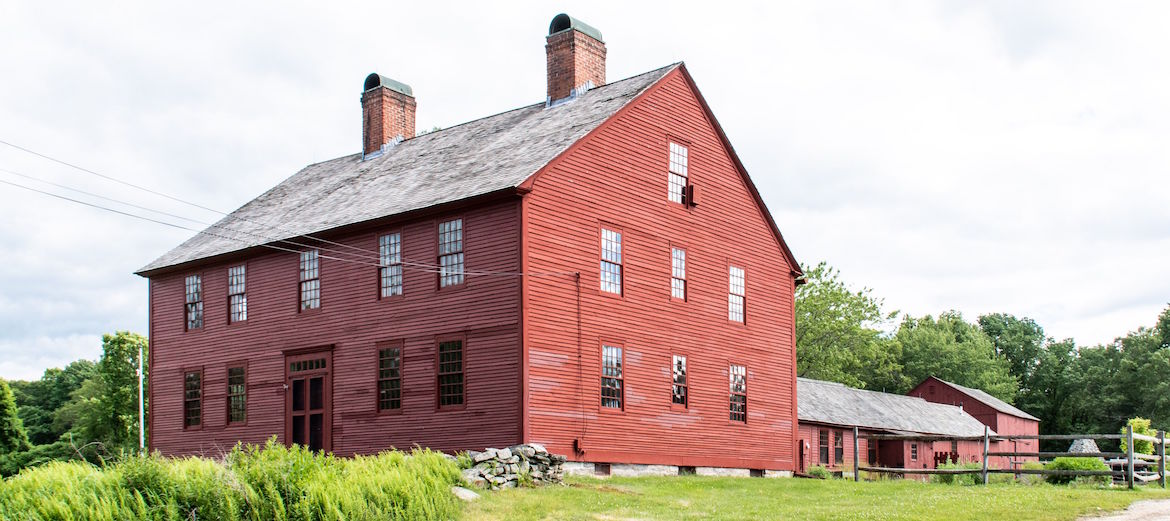
Fourth and Final Stop: Nathan Hale Homestead, Coventry
I continued my journey along the Connecticut Barns Trail unit I reached my final destination, the Nathan Hale Homestead in Coventry (pictured above). Having lived in Connecticut for my entire life, it always surprises me at the places I have yet to visit. Nathan Hale is Connecticut’s State Hero who was hanged in 1776 at age 21 as a spy during the American Revolution. As countless students learn in their early education he famously stated, “I only regret that I have but one life to give for my country”.
Tours of the Georgian-style home are available, including the main portion of the house as well as the rambling barn that is attached to the rear of it. Called a connected barn, it is notable for being linked to the house. Frequently added on to, connected barns can have different segments for different functions. An ardent patriotic family, Nathan Hale grew up on the farm with his siblings. Six of eight Hale brothers served our country, with three giving their lives.
In Conclusion
I can’t recall a more delightful day than the one I spent traveling The Quiet Corner portion of the Connecticut Barns Trail. The changing scenery alone was worth the trip, but it was made even better with the punctuation of stops along the way. It is encouraging to see that farming is increasing in popularity across the state once again, with old barns being restored and repurposed, or even some new ones being constructed.

The Front Door Project
Deb Cohen is a lifelong Connecticut resident with a passion for architecture, history, and local travel. She also believes that a good front door adds instant curb appeal and is a focal point of a home, and through her photography provides inspiration for others to create the curb appeal of their dreams. When she isn't busy traveling, taking pictures, or writing, she keeps busy with family, friends, and her two beautiful golden retriever rescue dogs. To see more of Deb's work, find her on Instagram @thefrontdoorproject.
Special Delivery

Connecticut, Delivered Right to Your Fingertips
Share your email address to receive our free newsletter and be the first to see the latest travel deals, attractions and news from CTvisit.com!














